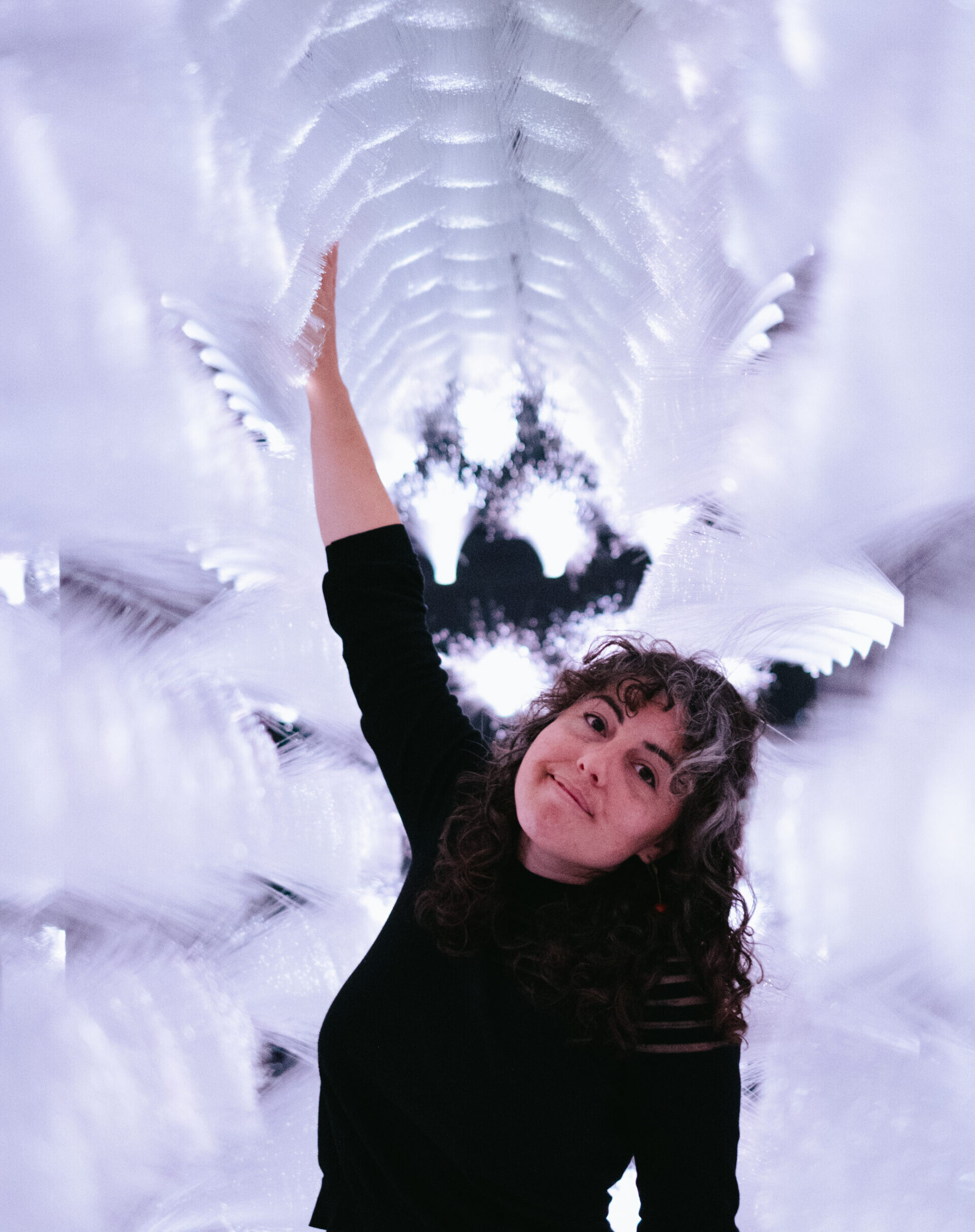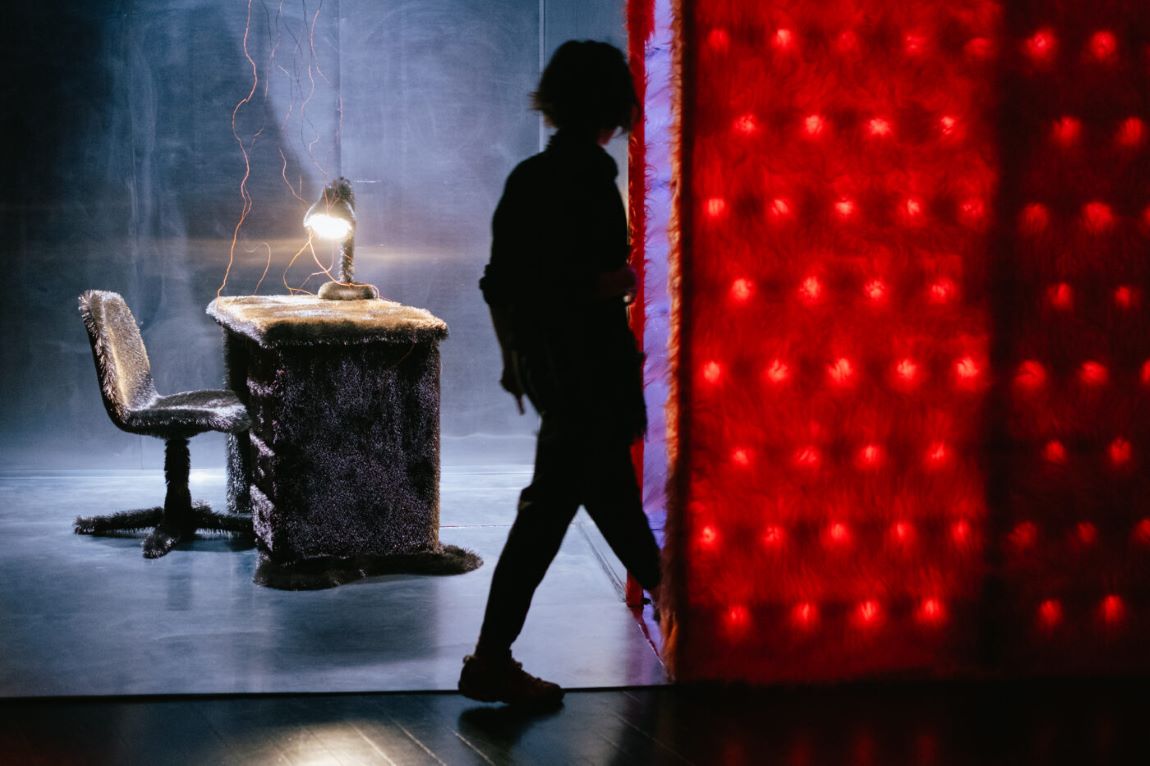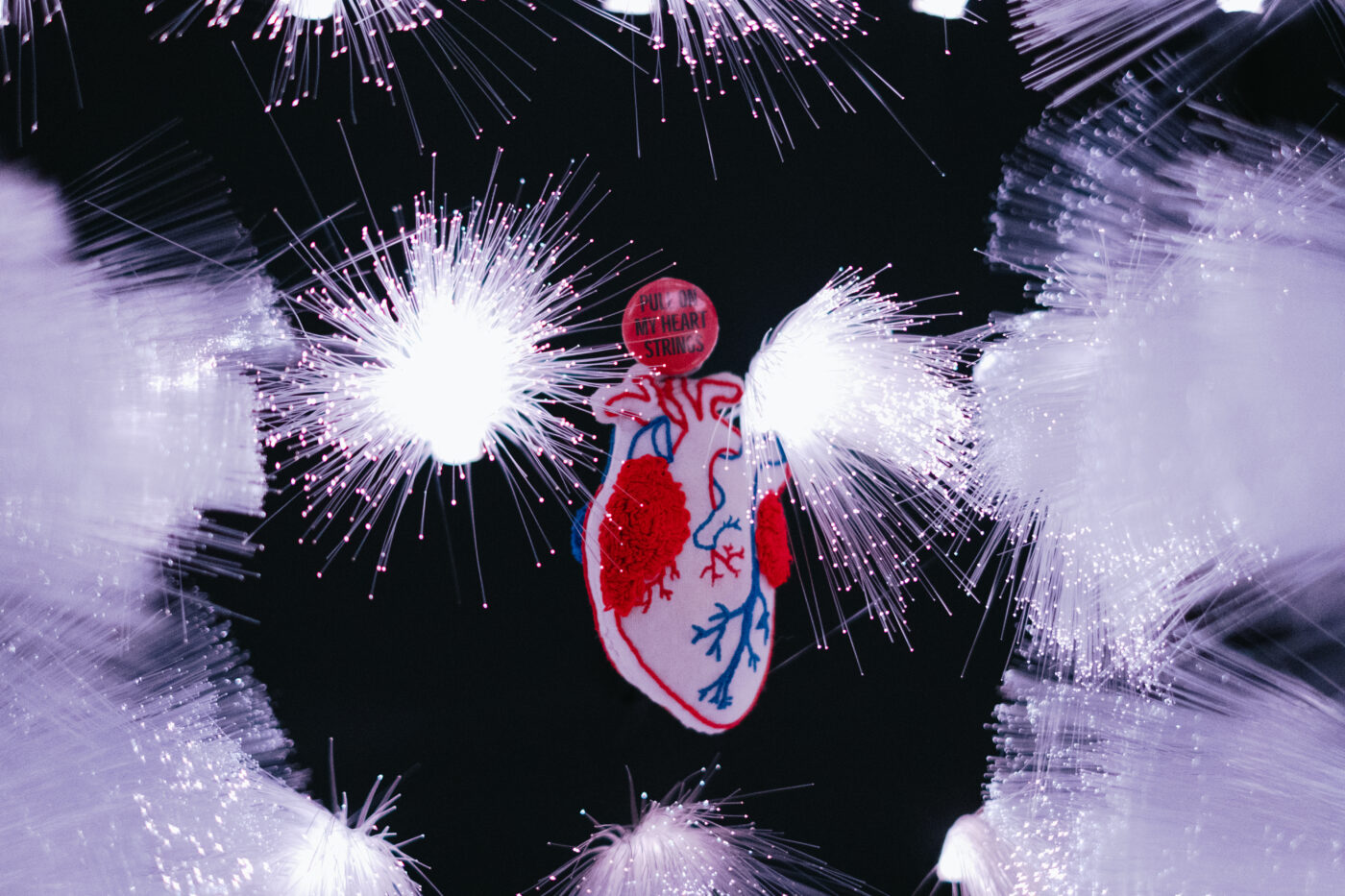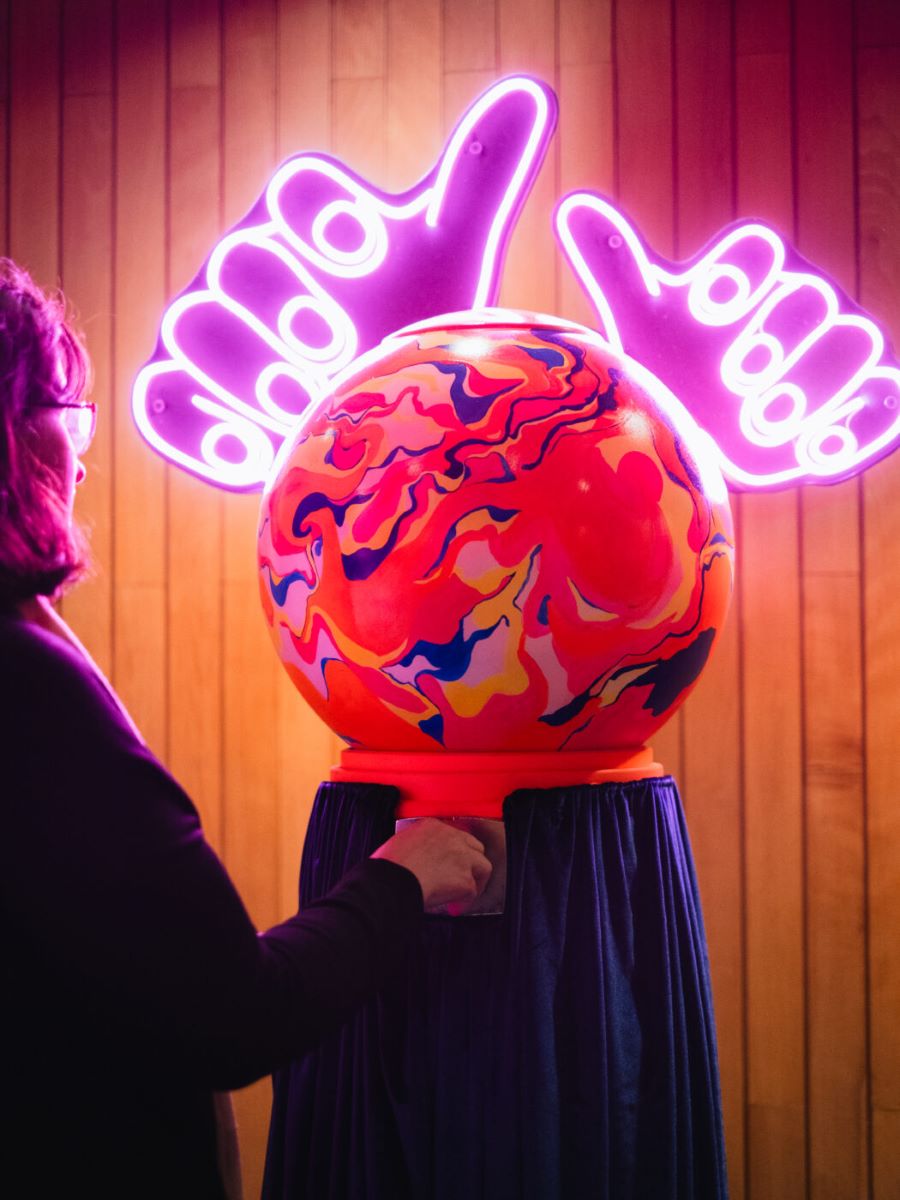arts
A tangible future
Ângela Rocha presents her first installation at Culturgest

It's called Half of the Minutes and it's an installation where we can enter and touch. On the stage of Culturgest's Small Auditorium, set designer Ângela Rocha imagines a future that takes us along the luminous paths of a sensory labyrinth. To unveil through our body.
A black cloud throws rays over an office table and there, almost in the shadows, everything is black: the desk, the drawer module, the lit lamp, the swivel chair. Some objects appear to breathe, in a gentle undulating movement that makes them almost alive. The scenery seems wild and, at the same time, cute and comfortable – but, to see Ângela Rocha’s installation, installed on the stage of Culturgest’s Small Auditorium, it’s not enough to look, you have to feel, grope, fumble, move and rummage.
Half of the Minutes, which opened to the public on November 30th and runs until January 5th, is described as a sensory labyrinth. The installation was created by the scenographer for the Portuguese Official Representation, curated by the General Directorate of Arts, at the Prague Quadrennial 2023, one of the largest international visual arts exhibitions. Designed post-covid, it seeks to remind us of the value of touch, countering the idea of danger associated with it during the pandemic and also combating its absence caused by increasingly digital relationships.
“I wanted to value the concept of being present, here and now. In this piece, we have to be present to feel it, it is not enough to see photographs or videos. It is an idea of reconnection with the body, of becoming aware of the body in space. I often evoke the image of the mime game to say that any day all our gestures will be summed up in a finger turning on and off, that this will be the code for everything. And it can’t be. I wanted to praise hands, manuality and their transformative power”, says Ângela Rocha. Hence exactly the name with which she baptized this work, Half of the Minutes, the title of the first graphic diary she made at the António Arroio School, using newspaper clippings. “It was the first time I paid more attention to what my hands were doing and I thought it made sense to return to this idea, reclaiming at least half the minutes to be present and connected to each other and to the earth, and not to the wifi”

“Rare visions of the future” was the motto for the works in that 15th edition of the Prague Quadrennial and positive ideas were also asked to be presented. The 36-year-old set designer, more accustomed to theater shows, made her debut in creating an artistic installation with the idea of setting up a labyrinth that required movement and placed the visitor at the center of the action. “The spectator here has to be the protagonist”, she emphasizes. “Today, the audience is in a place of comfort and distance and, in this piece, I wanted them to be more involved, to come closer and guide themself through stimuli, but deciding for themself. The place is empowering and explorative, for each person to discover, guide themselves and choose the path and interaction they want to make.”
Working for wonder
So let’s enter this maze covered in pink plush. Inside, tight paths await us, as if we were in some kind of automatic car wash lined with luminous fireworks and a mirrored floor. Immersed in a sound environment created by Miguel Raposa Lima, there are paths that lead us to doors, there is one that takes us to a dead end where a heart (almost) capable of exploding awaits us. The idea is to play without fear, lean in wherever we go, interact with what we encounter, try out the different textures and discover that what it seems is not always true. “I would like to work towards those seconds of wonder, when we have not yet started to think about what things are or to catalogue. For me, these moments are pockets of oxygen and I believe we really need that”, says Ângela Rocha, who, in a collaborative approach, invited the visual artists Diogo Costa and Telma Pais de Faria to each think about one of the ways out of the labyrinth, conceiving works there.

The installation, which at the Prague Quadrennial won the public award, PQ Kids, and was previously in Évora, at the Eugénio de Almeida Foundation, is now in the scenographer’s work environment: a stage. However, conceiving it was a challenge, she confesses. “But I like challenges and I liked this format in which the public has access to what I do without the intermediation of actors. It is a direct relationship with the object. I have always been drawn to the truth of materials, that they all have their specific strength. What fascinates me is being able to choose the right material for each thing”, adds Ângela, who started as a scenography and costume assistant at Artistas Unidos and worked, as a scenographer and costume designer, for directors such as Cláudia Gaiolas, Guilherme Gomes, Gonçalo Waddington, João Pedro Mamede, Maria João Luís, Raquel Castro, Ricardo Neves-Neves, Tiago Guedes and Tiago Rodrigues, among many others. In 2025, she will make an installation again, commissioned for a theater outside Lisbon, but she does not reveal further details.

At Culturgest, Half of the Minutes starts before we even go down to the Small Auditorium. At the entrance, we find an object that resembles a fortune teller’s crystal ball, but which is one of those machines from which we can get a surprise in exchange for a 50 cent coin. Inspired by the theme of the Prague Quadrennial and wanting to make the Representation of Portugal a collective gesture, the artist invited anyone who wanted to leave their “rare vision of the future” in a library close to her, from the north to the south of the country.
Contributions were collected and are part of this second installation within the installation. Mirabolante, as it is called, brings “the voice of these people” to those who want to try their luck and buy a plastic ball with a filling. From within, messages left for the future come out, which can take various forms: confetti in the shape of a star, a song that can be heard through a qrcode (such as The Future’s So Bright, by Timbuk 3), a drawing, a key -surprise of a lock that we don’t know what will open, seeds that someone may or may not plant (sharing the responsibility for a common future), flowers such as pansies, a phrase written on paper (“Everyone needs to join hands as quickly as possible to resolve serious problems.”).
“The future wants to be plural and not have a single voice”, believes Angela Rocha, “and the first step to building something is to imagine it”.